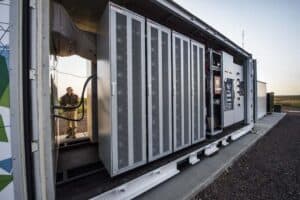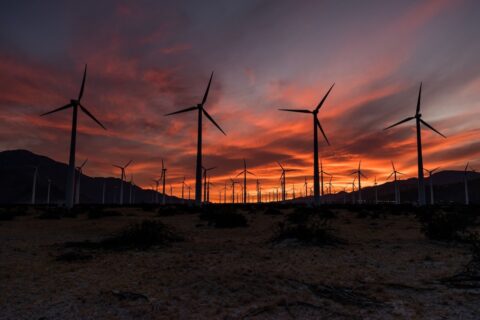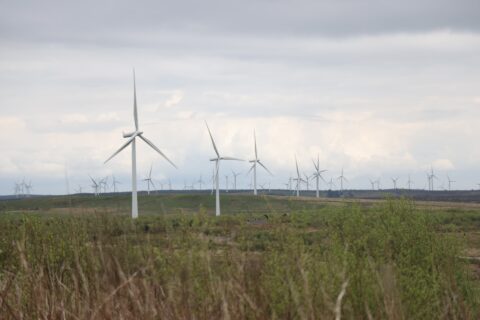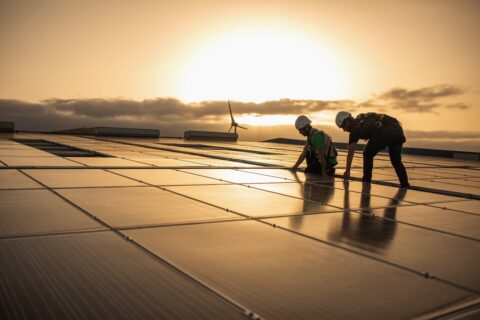The COVID-19 pandemic and associated lockdowns have led to unprecedented economic costs being incurred around the world. In particular, European countries with larger outbreaks (such as the UK, Spain, Italy, Germany and France) have already suffered significantly losses. In this SustMeme Guest Post, our Climate & Energy Channel Partner CESI shares its up-to-date analysis of exactly what the impact has been on the energy sector, especially electricity usage, plus the prospects for the next five years.
 CESI: The 2020 crisis is unlike any other we have experienced. Together with the health emergency, the lockdown brought down entire industrial sectors. In Italy alone, for example, the International Monetary Fund has forecast a 9.1% reduction in GDP, while the European Commission has estimated an even worse impact of -11.2%.
CESI: The 2020 crisis is unlike any other we have experienced. Together with the health emergency, the lockdown brought down entire industrial sectors. In Italy alone, for example, the International Monetary Fund has forecast a 9.1% reduction in GDP, while the European Commission has estimated an even worse impact of -11.2%.
As a result, the price of electricity underwent marked reductions on the European energy market, as low demand, high production of renewables and the fall in the price of fossil fuels dragged cost down significantly.
Interestingly, electricity usage is a very handy high-frequency indicator of economic fluctuations, and the relevant data are available with almost no lag for many European countries.
What the figures show is that, despite lower energy prices, weekly (workdays) electricity usage has been declining in most European countries: on average, electricity usage was about 5% lower than in 2019 during early March and the drop accelerated to 15% around mid-April.
Drilling down into the data, CESI SpA – the world-leading technical testing, consulting and engineering company in the field of technology and innovation for the electric power sector — has produced a recent study focused on this period of time, highlighting a drop in energy demand connected to the lockdown measures adopted by individual countries, as follows:
- -25% in Italy;
- -20% in France; and
- -12% in the United Kingdom.
In order to understand and face the issues caused by the consequences of COVID-19, the CESI analysis underlines the need to improve flexibility and resilience measures to manage a system with a high penetration of renewables.
Prospects for the next five years
Examining the impact of the pandemic on the energy system, the CESI report highlights fundamental indications for the development of the sector over the coming decade. The analysis is particularly insightful when looking to understand what could take place over the next five years in terms of the penetration rate of renewables: the 44% during lockdown is very close to the 44.6% expected for 2026 in the 2030 Horizon programme.
The study highlights how, on the one hand, the collapse in energy demand meant that the ratio between the generation of RES (Renewable Energy Sources) and demand increased. On the other hand, however, the study also highlights a drastic reduction in export capacity abroad, due to the need to balance the national energy system and ensure its stability, with a significant drop in imports as a consequence, plus market fragmentation.
Using the lockdown data to extrapolate what may happen over the entire year, the study presents a forecast for 2026 and previews the consequences of the implementation of the flexibility measures necessary to manage a system heavily based on renewables for the Italian electricity network.
The analysis by CESI identifies some possibilities, proposing an accelerated roadmap to make the electric system more flexible and guarantee a greater integration amongst renewable sources.
Thermal generation, for example, has proven to be an effective component in balancing the system against a drop in energy demand, but it is still not as flexible as required. In order to balance national energy systems in Europe and ensure their stability, it is necessary to anticipate and accelerate both the concrete use of additional flexibility measures (such as pumping, batteries, storage, and so forth) and the creation of interconnection infrastructures.
These infrastructures are key to increasing the flexibility of the energy system and, at the same time, they benefit the economy both from the point of view of the investments necessary for their realisation and in respect of the increase in the level of occupation they can determine.
In order to make demand generation and aggregation assets more efficient, it is also necessary to invest in the digitalisation of energy, control tools and data monitoring.
Furthermore, it is of fundamental importance to modify legislation to provide the transition process with rapid and streamlined authorisation procedures; uniform, simplified national regulations; and the adoption of simple and flexible support tools.
Ultimately, there is much we can learn from the last few months; and much more still to do over the next five years,
For those interested in flexibile integration of RES into the grid, CESI has organised an upcoming webinar — Renewables: new connection requirements and main challenges to get them into the grid — which will take place on July 28, 11am (CEST). Register, for free here.
 Headquartered in Milan and with facilities in Arnhem, Berlin, Prague, Mannheim, Dubai, Rio de Janeiro, Santiago de Chile, Knoxville (USA) and Chalfont (USA), CESI is the world-leading testing, consulting and engineering company in the field of technology and innovation for the electric power sector.
Headquartered in Milan and with facilities in Arnhem, Berlin, Prague, Mannheim, Dubai, Rio de Janeiro, Santiago de Chile, Knoxville (USA) and Chalfont (USA), CESI is the world-leading testing, consulting and engineering company in the field of technology and innovation for the electric power sector.
SUSTMEME: Get the Susty Story Straight!






